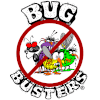
To schedule Ants Treatment
Call Us Today!
Bug Busters has been serving the Pacific Northwest since 1987. We are your Ants Treatment experts! We look forward to being of service to you !
If you have any additional questions that are not addressed within the text below: please contact us directly at 503-538-3992 or toll-free at 800-328-2847 or leave us your e-mail address using form below and we will reach you.
Carpenter Ants
These long-legged, swiftly moving creatures are among our largest ants, which often invade homes foraging for food or for nest building. The workers are highly polymorphic, that is they vary greatly in size ranging from 1/4 inch to more than 3/4 inch. The queens may be more than 1/2 inch long. The black carpenter ant is the most common carpenter ant in the eastern states.
Carpenter ants are distributed widely throughout the United States and range-from sea level to well above 9,000-feet in the western-mountain ranges. They very often are pests in lawns as well as homes. Since theirs is the habit of dwelling in and excavating wood, they were given the common name of “carpenter ant”.
Where an infestation is long standing and the colony is a large one consisting of several thousand ants, structural damage is frequently extensive enough to require major repairs. If the infestation is noted at an early stage, however, all that may be necessary is to get rid of the ants. But this can be a costly and exasperating experience.
Odorous House Ants
Tapinoma sessile is a species of ant that goes by the common names odorous house ant, piss ant, sugar ant, and coconut ant.
This species is a scavenger/predator ant that will eat most household foods, especially those that contain sugar, and other insects. Indoors they will colonize near heat sources or in insulation. In hot and dry situations, nests have been found in house plants and even in the lids of toilets. Outdoors they tend to colonize under rocks and exposed soil. They appear, however, to form colonies virtually anywhere, in a variety of conditions. They can trail extensive distances (though their trails are rarely longer than 50 feet), usually along landscape edges. Colonies range in size from 100-10,000, and house several queens (as many as 200, in some instances). They are non-aggressive.
The common names “odorous house ant” and “coconut ant” come from the odor the ants produce when crushed, which is very similar to the pungent odor of a coconut.
Carpenter Ants Treatment Procedures
Wall Void Injection Process (Drill and Treat)
At the exterior of the home, 1/8 inch holes are drilled into the wall voids, approximately 18 inches apart. This is done with high pressure equipment, using a special four-way lateral injection tip. The objective is to treat the interior of the wall voids in order to prevent the Ants from using these void areas as means of access to other areas of the home. Please know that this is performed with the greatest of care to ensure that the holes will not be noticeable. (Note: homes with a vertical style siding may require caulking and/or painting to touch up these areas. This can be provided at an additional fee.)
Treatment of Vaulted Ceiling and Attic Areas
Vaulted ceilings may require additional services such as “drilling and treating” into tongue and groove areas, and/or related void areas. Construction of vaulted ceilings varies, and as such, the treatment will vary, depending upon construction methods encountered. In this case, extra charges may apply. Attic areas will be “dusted” using Boric Acid Dust, and/or Timbor (a Borate powder). This treatment will also overlap onto a number of other pest problems (e.g. silverfish, firebrats, etc.).
Crawl Space and Basement Areas
Homes with Basements that are un-finished are treated by making a direct application to the sill-plate and adjacent areas (above the foundation wall). Crawl Space constructed homes will be treated using a ULV maching to “fog” the crawl area below, or dusted using a boric acid or borate dust as mentioned above. NOTE: Should the homeowner choose to have a more thorough treatment rendered to the crawl area (e.g. a direct application on the sill-plate and adjacent areas), this can be done for an additional fee. Factors include the absence or presence of sub-floor insulataion (if insulation is present it will need to be trimmed or folded back); the overall accessibility of the crawl area, etc. SUB-NOTE: If it has been over a year since your crawl area was last inspected, you may with to consider having a “Full Inspection” of this area performed. Benefits include peace of mind in knowing if other problems are present (e.g. Rot, Termites, Leaks or other conditions conducive to pests).
Exterior of Home and Perimeter Areas
This includes treating under the Eave-line, around Windows and Doors, base of the Siding, the Foundation Wall, as well as Perimeter areas, 10 to 12 feet out (or more) into the Bark-dust, Bedding, Shrubbery and Lawn areas.
Treatment of Kitchen, Bathroom and Utility Areas
This consists of “drilling and injecting” (i.e. treating) into the false bottom areas of the cabinet voids (possible harborage areas) and treating the plumbing chase areas (wherever the plumbing lines pass through the wall). These areas are targeted due to the moisture and condensation available to Ants as well as other insects.
Crack and Crevice Treatment
This is done to all exterior doors and baseboards in areas of “high” Ant activity. This treatment acts as a secondary line of defense, in conjunction with the balance of the treatment procedures (see above). NOTE: Additional options inculde the treatment of all baseboard areas throughout the home, around window casings, wall juctions, ceiling junctions, etc. This option will overlap onto a host of other pests in addition to Carpenter Ants, and provide a dramatic reduction in the “Bug Population” at large.

